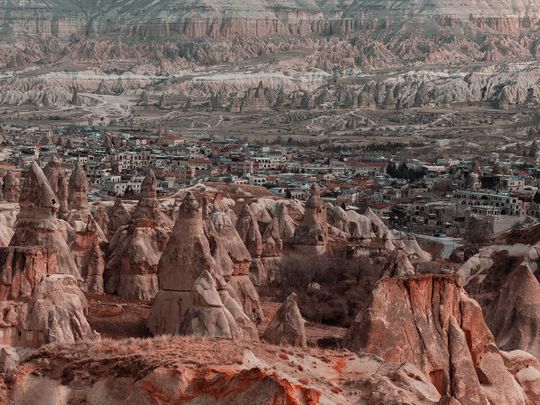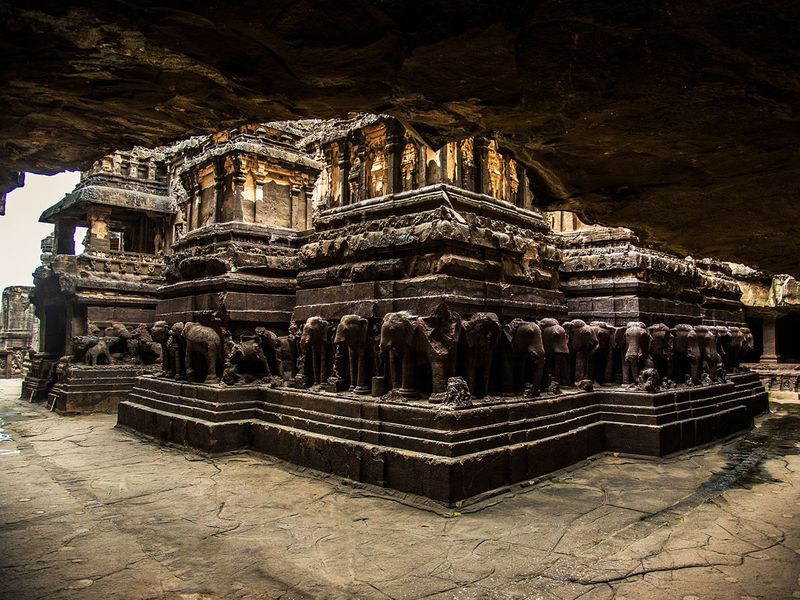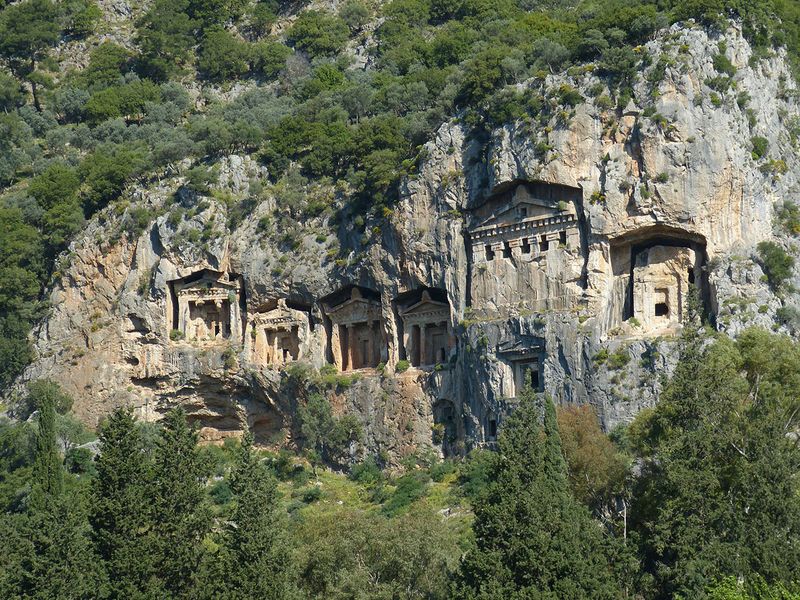
Long before we were alive, there were rocks – large, imposing, solid, they have made their mark in almost every continent, and have survived the test of time.
Click start to play today’s geology themed Crossword and identify different aspects of rock composition and types.
It’s human nature to modify our surroundings. So, since time immemorial, humans have come upon rock faces and decided to carve structures from it. Often, temples and buildings have been hewn from living rock – rocks that are part of geologic features like cliffs or outcroppings. This ancient manmade architecture still remains as an object of beauty in the modern age.
Here are a few around the world that are impossible to ignore:
1. Mada’in Saleh

Called Al Hijr in Arabic, the tombs of Mada’in Saleh in Saudi Arabia were carved into sandstone mountains and date from the first century BC to the first century AD – that makes them over 2,000 years old. A pre-Islamic civilisation called the Nabateans built the incredible structure (they are also responsible for the rock-hewn monuments of Petra, Jordan). The Nabateans originated from the north of the Arabian Peninsula and were renowned for their skilled harnessing of water in the Arabian Desert.
2. Kailasa Temple

Carved from a single block of excavated stone, this massive structure in Maharashtra, India, is part of 34 cave temples and monasteries, collectively known as Ellora Caves. As a United Nations Educational, Scientific and Cultural Organisation (Unesco) World Heritage Site, monuments in the area date between 600 and 1,000 AD. The Kailasa Temple itself is considered to be the world’s largest structure hewn from a single rock.
3. Lycian tombs

Built with the intention of serving as houses for the afterlife, the Myra necropolis was carved by Lycians in what is now a small town called Demre in Turkey. The Lycians were an ancient people who were influenced by Greek, Turkish and Egyptian cultures thousands of years ago. When the tombs were first discovered, they were painted in bright red, green and yellow, but the colours have worn off over time. The tombs were always built on top of hills or as part of cliffsides, since Lycians believed the dead would be transported to another world by a winged creature.
4. Fairy chimneys
Located in Cappadocia, Turkey, these surreal, towering rock formations (picture above) stretch as high as 130 feet into the sky. The stunning formations were millennia in the making – ancient volcanic eruptions blanketed the region in ash, which later solidified into a soft rock called ‘tuff’. With time, wind and water, the tuff eroded away, leaving only the harder, cone-like elements behind. During the Roman period, people built caves, living quarters and other structures in the soft rock, creating a honeycombed network that provided shelter and protection.
Have you visited any of these regions? Play today’s Crossword and tell us at games@gulfnews.com.






